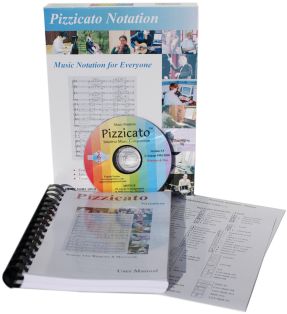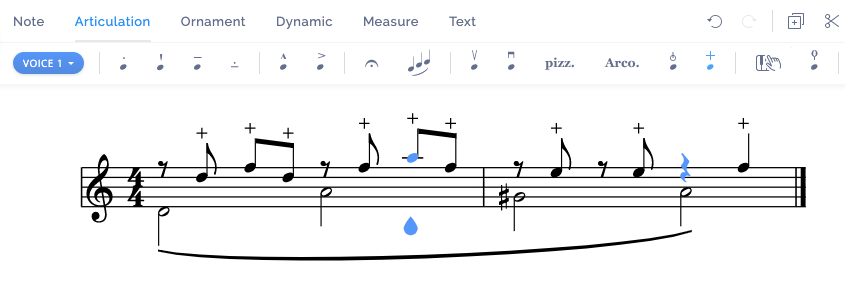

Explore Alternative Music Notation Systems Based on Numbers. Pizzicato TM Music Notation and Intuitive Music Composition Pizzicato Light Pizzicato Beginner Pizzicato Notation Pizzicato Guitar Pizzicato Choir Pizzicato.
#Pizzicato notation mac#
For example, Leroy Anderson's Jazz Legato/Jazz Pizzicato. Pizzicato Alternative Notation Light for Windows and Mac (English version) : .uk. A staccato passage for strings is by definition a bowed rather than a pizzicato technique, though pizzicato itself might be thought of as a kind of staccato effect. A left hand pizzicato is usually indicated by writing a small cross above the note, and a Bartk pizzicato is often indicated by a circle with a small vertical line through the top of it above the note in question or by writing Bartk pizz at the start of the relevant passage. Playing staccato is the opposite of playing legato. In the second measure, the pairs of notes are stemmed separately indicating two different parts, so the staccato applies only to the upper note.Ī dot indicating staccato articulation is not to be confused with a dotted note. The staccato applies to both notes of the pairs. You can also copy and paste it, or use its HTML Entity.
#Pizzicato notation code#
In the first measure, the pairs of notes are in the same musical part since they are on a common stem. Insert the symbol musical-symbol-combining-snap-pizzicato by using its Alt Code or the HTML Code. The opposite musical articulation of staccato is legato, signifying long and continuous notes. This does not, however, alter the rhythm of the music and the remainder of the time allotted for each staccato note is played as rest. Whenever possible, when alternating short bow-strokes with left hand pizzicato bounce the bow on the string close to the point, imitating with the bow the sound of the pizzicato. These signs involve various combinations of dots, vertical and horizontal dashes, vertical and horizontal wedges, and the like, but attempts standardize these signs have not generally been successful. of successful left hand pizzicato are 1) clarity: every note is absolutely clear and equal in strength with the others, and 2) machine-like evenness of rhythm.

A number of signs came to be used in the late 19th and early 20th centuries to discriminate more subtle nuances of staccato. However, before 1850, dots, dashes, and wedges were all likely to have the same meaning, even though some theorists from as early as the 1750s distinguished different degrees of staccato through the use of dots and dashes, with the dash indicating a shorter, sharper note, and the dot a longer, lighter one. In 20th-century music, a dot placed above or below a note indicates that it should be played staccato, and a wedge is used for the more emphatic staccatissimo.


 0 kommentar(er)
0 kommentar(er)
